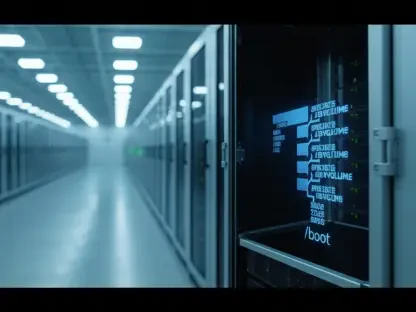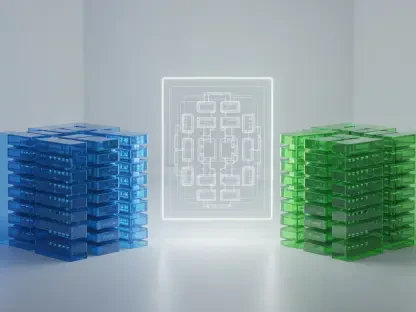In the rapidly evolving landscape of the automotive industry, a profound transformation is taking place as software-defined vehicles (SDVs) redefine what a car can be, shifting the focus from mechanical engineering to digital innovation. No longer just modes of transportation, vehicles are becoming dynamic platforms that improve over time through software updates, mirroring the constant evolution seen in smartphones. This change represents one of the most significant upheavals in the sector’s long history, positioning software as the primary driver of value through advancements like autonomous driving, connected services, and over-the-air (OTA) updates. Traditional automakers and suppliers face immense pressure to adapt to this software-centric world, where consumer expectations demand rapid feature rollouts and seamless safety enhancements. Yet, many are held back by outdated development approaches that fail to keep pace with market demands. Software Lifecycle Management (SLM) emerges as a critical solution, offering a strategic framework to accelerate innovation, ensure safety, and maintain relevance long after a vehicle leaves the factory. This approach is not merely technical but a fundamental shift in mindset, promising to reshape the future of mobility.
The Shift to Software-Defined Vehicles
Why Software Now Defines Value
The rise of software-defined vehicles marks a turning point for the automotive industry, where the true value of a car increasingly lies in its digital capabilities rather than its mechanical components. Trends such as autonomous driving, which relies on complex algorithms for navigation and decision-making, and connected services, which enable real-time data sharing for navigation or entertainment, are transforming vehicles into sophisticated tech platforms. Unlike traditional cars defined by engine power or design, SDVs prioritize software as the core of innovation, allowing manufacturers to differentiate themselves through user experiences and functionality. This shift is evident as major automakers invest heavily in software development, recognizing that customer loyalty now hinges on digital features that can be updated and expanded over time. As hardware becomes more standardized, the ability to deliver cutting-edge software solutions sets industry leaders apart in a crowded market.
Moreover, this transition reflects a broader industry acknowledgment that software is not just an add-on but the foundation of future growth. Connected services, for instance, enable vehicles to integrate with smart cities or provide subscription-based features, creating new revenue streams long after a sale. Autonomous driving systems, meanwhile, depend on continuous software refinement to improve safety and performance, pushing companies to prioritize digital expertise over traditional engineering strengths. The implication is clear: automakers must evolve into tech companies, mastering software to meet modern demands. This paradigm shift challenges legacy players to rethink their core competencies while offering digital-native firms an opportunity to disrupt established norms. The stakes are high, as software’s role in defining vehicle value continues to grow, reshaping competitive dynamics across the sector.
Consumer Expectations and OTA Updates
Today’s consumers approach vehicles with expectations shaped by their experiences with personal electronics, demanding that cars improve continuously through regular updates much like smartphones. Over-the-air updates have become a critical feature, allowing manufacturers to deliver new functionalities, performance enhancements, and vital safety patches without requiring a trip to the dealership. This capability aligns with a growing desire for vehicles that evolve over time, offering personalized experiences or adapting to new regulatory standards. Failing to meet these expectations risks alienating customers who now view constant improvement as a baseline, not a luxury. Over-the-air updates, therefore, are no longer optional but a competitive necessity, pushing companies to integrate this technology as a core component of their offerings in order to retain market relevance.
Beyond mere convenience, OTA updates represent a fundamental change in how vehicles interact with their owners, fostering a long-term relationship between manufacturer and consumer. They enable rapid responses to emerging issues, such as cybersecurity threats, by deploying patches in real time, thus enhancing trust in the brand. Additionally, these updates can unlock premium features on demand, creating opportunities for recurring revenue through subscription models. However, without a robust system to manage these updates, companies risk delivering inconsistent experiences or failing to address critical flaws promptly. The pressure to meet consumer demands for seamless, reliable updates underscores the need for a strategic approach that ensures quality and timeliness, positioning OTA capabilities as a cornerstone of modern vehicle design and customer satisfaction.
Challenges with Traditional Development Models
Limitations of Legacy Approaches
The automotive industry’s reliance on traditional development models, such as the V-model, poses significant barriers in the era of software-defined vehicles, where speed and adaptability are paramount. The V-model, characterized by its sequential phases and late-stage testing, was designed for a hardware-centric world, prioritizing thoroughness over agility. However, this rigidity results in prolonged development cycles, often delaying time-to-market for new features or critical updates. In a landscape where consumer expectations demand rapid innovation, such delays can erode competitive edge. Moreover, the model struggles to accommodate the iterative nature of software development, leading to inconsistent quality and challenges in addressing bugs or integrating user feedback after production. This outdated framework is ill-equipped to handle the dynamic requirements of SDVs, leaving many automakers scrambling to keep up.
Compounding these issues is the reactive nature of legacy approaches, which often treat software updates as an afterthought rather than a core capability, leading to significant challenges in maintaining competitiveness. When issues arise post-launch, the slow feedback loops inherent in traditional models hinder timely resolutions, risking customer dissatisfaction and safety concerns. The V-model’s focus on completing one phase before moving to the next stifles the flexibility needed to adapt to evolving market trends or regulatory changes. As a result, many companies find themselves applying patchwork solutions to integrate over-the-air updates, rather than embedding them strategically from the outset. This mismatch between old methods and new demands highlights a critical need for transformation, as clinging to rigid frameworks threatens to widen the gap between industry leaders and laggards in a software-driven market.
The Need for Speed and Flexibility
In the fast-paced world of automotive software, the urgency for accelerated development cycles has never been greater, as delays can directly impact a company’s ability to meet market demands and consumer needs. Traditional models, with their linear and phased approach, often create bottlenecks that prevent quick iterations or adjustments based on real-time feedback. This lack of agility means that by the time a feature or fix reaches the customer, it may already be outdated or insufficient, diminishing its value. The competitive landscape now rewards those who can pivot swiftly, rolling out enhancements or addressing issues before they escalate into larger problems. Speed, therefore, becomes a defining factor in maintaining relevance, pushing the industry to rethink how development processes are structured.
Flexibility is equally critical, as the software needs of vehicles are constantly evolving with technological advancements and shifting user preferences, creating a dynamic landscape for automakers to navigate. Legacy systems struggle to incorporate post-production changes or integrate emerging technologies like artificial intelligence without significant overhauls, often leading to costly rework. The inability to adapt quickly to these changes limits an automaker’s capacity to innovate at the pace required by a connected, consumer-driven market. A development approach that allows for continuous integration and iterative improvements is essential to stay ahead. Without such adaptability, companies risk not only falling behind competitors but also failing to meet regulatory or safety standards that evolve alongside technology, underscoring the pressing need for a more dynamic framework.
The Power of Software Lifecycle Management
Building a Unified SLM Framework
Software Lifecycle Management offers a transformative solution to the challenges of the software-defined vehicle era by providing a unified framework that integrates over-the-air update capabilities from the very beginning of the development process. Unlike fragmented or ad-hoc approaches, a robust SLM system embeds OTA functionality as a strategic priority, ensuring vehicles can receive updates seamlessly throughout their lifespan. This approach fosters cross-functional collaboration among engineering, IT, and product teams, breaking down silos that often hinder innovation in traditional setups. By prioritizing software over hardware in architectural design, SLM enables automakers to focus on delivering digital experiences that resonate with modern consumers. Such a framework is not just about managing code but about creating a cohesive ecosystem where updates, safety, and user needs align effectively.
Additionally, a unified SLM framework addresses the complexities of managing software across diverse vehicle models and configurations, ensuring consistency and reliability at scale. It supports end-to-end traceability, allowing teams to track changes, monitor performance, and maintain compliance with industry standards throughout the development cycle. This holistic view reduces the risk of errors that can arise from disjointed processes, enhancing both quality and speed. For legacy automakers transitioning from hardware-centric cultures, adopting this framework requires a significant shift, but it is essential for staying competitive. Digital-native players also benefit by establishing structured processes to manage growth without accruing technical debt. Ultimately, SLM becomes the backbone of innovation, enabling companies to deliver value through software in a systematic, sustainable way.
Hybrid Methodologies for Balance
A key strength of Software Lifecycle Management lies in its ability to blend Agile and V-model methodologies, creating a hybrid approach that balances the need for speed with the imperative of safety in automotive software development. Agile principles bring flexibility and iterative delivery, making them ideal for non-critical features like infotainment systems or user interface updates, where frequent releases can enhance customer experiences. Conversely, the V-model’s structured emphasis on traceability and validation remains crucial for safety-critical systems such as braking or steering, where errors can have severe consequences. By combining these methodologies, SLM ensures that rapid innovation does not come at the expense of reliability, allowing automakers to address diverse requirements within a single, cohesive process.
This hybrid model is further supported by automated tools that streamline workflows, such as continuous integration and continuous delivery pipelines with built-in safety checks. These tools enable teams to deploy updates quickly while maintaining rigorous quality controls, reducing the time between ideation and implementation. For instance, feature-driven updates can follow Agile sprints for swift market delivery, while safety systems adhere to V-model rigor to meet regulatory demands. This dual approach mitigates the shortcomings of standalone methodologies, offering a tailored solution that adapts to the unique challenges of software-defined vehicles. As a result, companies can innovate confidently, knowing that their processes safeguard both customer satisfaction and compliance, positioning them to thrive in a competitive landscape.
Early Testing Through Virtualization
One of the standout features of Software Lifecycle Management is the practice of “left-shifting,” which moves testing and validation to earlier stages of the development lifecycle, significantly enhancing efficiency and quality. Virtualization plays a pivotal role in this strategy by enabling engineers to simulate entire vehicle environments, including electronic control units, sensors, and real-world driving conditions, long before physical prototypes are available. This early simulation allows for integration testing and automated regression testing across various configurations, identifying potential issues before they become costly problems. By catching bugs sooner, development teams can iterate more quickly, reducing the time spent on late-stage debugging and accelerating overall timelines without sacrificing reliability.
Furthermore, virtualization within SLM facilitates parallel testing, where thousands of scenarios can be run simultaneously to assess software performance under diverse conditions. This capability is particularly valuable in the context of software-defined vehicles, where the complexity of interconnected systems demands thorough validation. Early feedback loops enabled by virtual environments ensure that developers can refine code continuously, adapting to new requirements or user feedback with minimal disruption. The result is a faster, more agile development process that maintains high standards of safety and functionality. For automakers, this translates into a competitive advantage, as they can bring innovations to market more swiftly while upholding the trust of consumers and regulators in an increasingly digital automotive ecosystem.
SLM Across the Supply Chain and Beyond
Collaboration as a Competitive Edge
Software Lifecycle Management extends its transformative impact beyond individual companies, reshaping the entire automotive supply chain by fostering collaboration as a critical competitive advantage. Traditionally, suppliers focused on delivering physical components, but in the era of software-defined vehicles, tier 1 suppliers and semiconductor manufacturers are evolving into strategic partners. They now offer reference architectures, cloud-based testing environments, and OTA management solutions, directly contributing to the software ecosystem. SLM serves as a shared governance framework, creating a common language that unifies hardware, software, and cloud services across diverse stakeholders. This collaborative approach ensures that all parties align on quality, safety, and update delivery, enhancing the overall resilience of the supply chain.
This shift also enables a more integrated response to industry challenges, such as scaling OTA updates across millions of vehicles or addressing cybersecurity threats in real time, ensuring automakers can adapt swiftly to evolving demands. By embedding SLM principles into supplier relationships, automakers can leverage external expertise and infrastructure, reducing development burdens and accelerating innovation. For instance, cloud platforms provided by suppliers can streamline testing and deployment, while shared standards under SLM minimize compatibility issues. This interconnectedness transforms the supply chain from a linear hierarchy into a dynamic network, where each participant plays a vital role in delivering value to the end consumer. As a result, companies that embrace collaborative SLM are better positioned to navigate the complexities of modern mobility, gaining an edge over those operating in isolation.
Managing AI Complexity
The integration of artificial intelligence into automotive systems, from self-driving algorithms to personalized infotainment, introduces significant complexity that Software Lifecycle Management (SLM) is uniquely equipped to handle. AI-driven features require continuous updates and rigorous validation to ensure performance and safety, adding layers of intricacy to development processes. SLM addresses this by incorporating DevOps and MLOps practices, which automate software deployment and manage AI model lifecycles, including training, versioning, and monitoring. These methodologies enable seamless integration of AI into vehicle systems, ensuring that models evolve with real-world data while maintaining compliance with emerging regulatory standards. Without such a structured approach, the risk of errors or outdated models could undermine critical functionalities.
Additionally, SLM leverages left-shifting and virtualization to tackle AI-specific challenges, such as the need for extensive data to train models effectively. Virtual environments allow developers to generate simulated datasets, often using generative AI, to test and refine algorithms early in the cycle. This reduces dependency on physical testing and speeds up innovation, while built-in audit trails and version control within SLM ensure transparency for regulatory oversight. As AI becomes a cornerstone of automotive innovation, managing its lifecycle through SLM is essential to balance rapid advancement with accountability. Companies that adopt these practices can confidently deploy AI solutions, knowing they have the tools to address both technical and legal complexities, thereby shaping the future of connected, intelligent mobility.
Strategic Impact of SLM
The strategic impact of Service Lifecycle Management (SLM) is profound, as it enables organizations to streamline operations, enhance customer satisfaction, and drive long-term profitability through a structured approach to service delivery and maintenance. By integrating SLM practices, businesses can effectively manage the entire lifecycle of their services, ensuring optimal performance and adaptability in a competitive market.
Leading Through Innovation
Software Lifecycle Management stands as a strategic enabler, positioning companies that master it as frontrunners in the rapidly evolving, software-driven mobility ecosystem of the automotive industry. By streamlining development processes, integrating OTA capabilities, and prioritizing software over hardware, SLM empowers automakers to deliver secure, reliable updates at scale, meeting consumer demands with unprecedented agility. This capability is not just a technical achievement but a differentiator that separates industry leaders from followers. As connectivity and digital features increasingly define vehicle value, those who excel in SLM can innovate continuously, offering experiences that captivate customers and build long-term loyalty. The focus shifts from merely producing cars to creating evolving platforms that adapt to user needs and market trends.
Moreover, SLM’s strategic importance lies in its ability to foster resilience amid growing complexity, whether from expanding vehicle fleets or integrating cutting-edge technologies like artificial intelligence. It provides a foundation for managing diverse software ecosystems, ensuring that updates and enhancements are delivered without compromising safety or compliance. This positions companies to not only respond to current challenges but also anticipate future shifts, such as stricter regulations or new consumer expectations. By embedding SLM into their core operations, automakers and suppliers can drive innovation proactively, securing a leadership role in a landscape where software is the ultimate currency. The result is a competitive advantage that transcends traditional metrics, focusing on sustained relevance in a digital-first world.
Shaping the Future of Mobility
Reflecting on the journey of automotive transformation, Software Lifecycle Management has proven to be a cornerstone in navigating the shift to software-defined vehicles, as it has enabled companies to adapt to a landscape where digital innovation takes precedence. It has bridged the gap between outdated development practices and the urgent need for speed, safety, and scalability, offering a unified approach that has reshaped how vehicles are designed and maintained. By integrating hybrid methodologies, early testing through virtualization, and collaborative supply chain dynamics, SLM addresses critical challenges that once hindered progress. Its role in managing the complexities of artificial intelligence further cements its importance, ensuring that emerging technologies are harnessed responsibly and effectively across the industry.
Looking ahead, the next steps involve deepening the adoption of SLM across all facets of automotive operations, from refining internal processes to strengthening partnerships with suppliers and tech providers. A focus on building even more advanced virtualization tools and expanding AI lifecycle management capabilities will be crucial to stay ahead of evolving demands. Additionally, aligning SLM frameworks with forthcoming global standards for cybersecurity and data privacy will help safeguard consumer trust as connectivity grows. The path forward lies in viewing SLM not just as a technical solution but as a cultural shift, embedding a software-first mindset at every level. This strategic evolution promises to sustain the momentum of innovation, ensuring that the automotive sector continues to deliver transformative mobility solutions for years to come.









